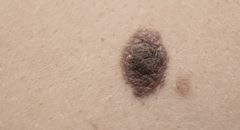 (BlackDoctor.org) — Researchers have shown for the first time that
(BlackDoctor.org) — Researchers have shown for the first time that
individual risk of melanoma, the most serious form of skin cancer, is associated
with the intensity of sunlight that a person receives over a lifetime. Published
in the journal Cancer Research*, the study also indicates that the risk of
melanoma for non-Hispanic whites increases with increased time outdoors – even
for men and women who can develop a deep tan.
Scientists have long recognized that rates of melanoma are higher in areas
that are closer to the equator or receive more sunlight, and that ultraviolet-B
rays are the primary cause of sunburn and skin cancer. In this study, the
authors developed a novel approach to measure an individual’s sun exposure over
a lifetime, taking into account where an individual has lived throughout his or
her life. This information determines average annual UVB intensity – the average
amount of ultraviolet-B rays that a person could be exposed to per year over his
or her lifetime. The data led the researchers to conclude that a 10 percent
increase in the average annual intensity was associated with a 19 percent
increase in the individual’s risk for melanoma in men and a 16 percent increase
in women, at any age.
“We’re learning more about the kinds of exposures that cause melanoma,” said
Thomas Fears, Ph.D., the first author of the paper and a scientist at the
National Cancer Institute in Bethesda, Md. “The risk of melanoma is greatest for
people who develop little or no tan. However, we’ve learned that where people
live as both kids and adults and how much UVB shines in those places are
important factors – regardless of tanning ability.”
According to Fears, it is not unusual to see at least a 10 percent difference
in intensity between two locations. New Orleans, for example, receives 20
percent more UVB each year than Atlanta.
In addition to estimating individual risk, the authors analyzed the number of
hours that study participants spent outdoors. They found that the number of
summer hours spent outside prior to age 20 was much larger than after age 20. In
light of this distinction, the researchers hypothesized that differences in
melanoma risk previously attributed to the “critical period” of childhood may,
in fact, be due to the larger number of hours that children typically spend
outdoors compared to adults.
“Studies such as this one serve as a reminder of the importance for adults
and children alike to develop good, lifelong habits for protecting themselves
from skin-damaging sun exposure,” said Health and Human Services Secretary Tommy
G. Thompson. “We are now seeing that not only length of sun exposure, but also
the intensity of the sun’s rays can affect one’s risk of melanoma.”
This study included 718 melanoma patients recruited from the Hospital of the
University of Pennsylvania, in Philadelphia, and from the University of
California in San Francisco. The comparison group included 945 non-melanoma
patients from those areas. The researchers limited the analysis to non-Hispanic
whites because the numbers of cases in other racial/ethnic groups were too few
for analysis.
Each participant was interviewed in person to gather data including tendency
to sunburn and ability to tan, along with medical, occupational, residential and
outdoor exposure histories. Residential histories were constructed in six-month
intervals, from date of birth to date of interview. Robertson-Berger (RB)
meters, which measure the amount of solar radiation received in a particular
location, were used to estimate the UVB intensity. A person’s cumulative
intensity was estimated by adding up the RB counts for each residence location
in six-month increments. Average annual intensity was determined by dividing the
cumulative intensity by the person’s age in years.
Future analyses will examine the effects of intermittent exposures on
individual melanoma risk. For example, researchers will consider whether people
who remain indoors for much of the week and then spend large amounts of time
outdoors over the weekend or during a vacation are at higher risk of
melanoma.
An estimated 53,600 people will be diagnosed with melanoma in the United
States in 2002, and an estimated 7,400 people will die of the disease. Melanoma
can be cured if detected and treated early.
——————————————————————————–
*
Fears TR, Bird CC, Guerry D, Sagebiel RW, Gail MH, Elder DE, Halpern A, Holly
EA, Hartge P, Tucker MA. Average UVB Flux and Time Outdoors Predict Melanoma
Risk, Cancer Research, July 15, 2002, Vol. 62, No. 14, 3992-3996.








